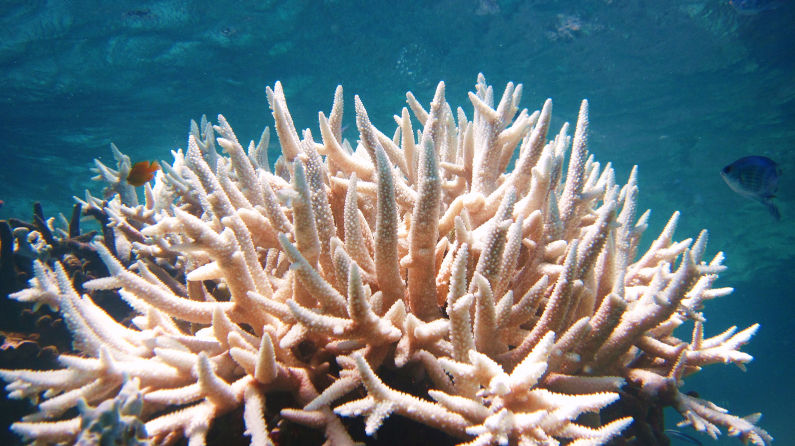NOAA warns world’s coral on verge of ‘Worst bleaching event in history of the planet’
Mar 12, 2024
“It’s looking like the entirety of the Southern Hemisphere is probably going to bleach this year,” one scientist said.
Driven by sustained climate-fuelled oceanic heating, the planet is on the brink of another mass coral bleaching event that marine biologists warn could kill large swaths of tropical reefs including significant areas of Australia’s Great Barrier Reef.
Scientists are sounding the alarm following months of record ocean temperatures exacerbated by the planetary emergency and the El Niño climate pattern in the Pacific Ocean.
“It’s looking like the entirety of the Southern Hemisphere is probably going to bleach this year,” Derek Manzello of the National Oceanic and Atmospheric Administration’s (NOAA) Coral Reef Watch toldReuters. “We are literally sitting on the cusp of the worst bleaching event in the history of the planet.”
When water is too warm, corals will expel the algae (zooxanthellae) living in their tissues causing the coral to turn completely white. This is called coral bleaching. When a coral bleaches, it is not dead. Corals can survive a bleaching event, but they are under more stress and are subject to mortality.
In 2005, the U.S. lost half of its coral reefs in the Caribbean in one year due to a massive bleaching event. The warm waters centred around the northern Antilles near the Virgin Islands and Puerto Rico expanded southward. Comparison of satellite data from the previous 20 years confirmed that thermal stress from the 2005 event was greater than the previous 20 years combined.
Following the planet’s hottest summer on record last year, the Caribbean suffered its worst recorded bleaching event. The last worldwide bleaching occurred in 2014-17, when scientists say approximately 15% of all reefs experienced major coral deaths. Nearly a third of the Great Barrier Reef’s coral perished during the bleaching.
In the Southern Hemisphere, where summer is ending and ocean temperatures are at or near their annual peaks, there is “basically bleaching all over the place,” according to Manzello.
Matthew England, a professor at the University of New South Wales in Australia who studies ocean currents, recently toldTheNew York Times that “the sea ice around the Antarctic is just not growing” and “the temperature’s just going off the charts.”
“It’s like an omen of the future,” he added.
It’s a similar story in the North Atlantic, which “has been record-breakingly warm for almost a year now,” University of Miami hurricane expert Brian McNoldy told the Times. “It’s just astonishing. Like, it doesn’t seem real.”
A 2018 report from the United Nations Intergovernmental Panel on Climate Change estimates that global heating of 1.5°C is likely to result in the loss of 70-90% the planet’s coral reefs over the coming decades.
Current emissions-based forecasts have Earth on track for at least 1.5°C of warming, which researchers say is likely to trigger five climate tipping points: melting of the Greenland and Antarctic ice sheets, mass die-off of warm-water coral reefs, thawing of Arctic permafrost, and collapse of the North Atlantic Subpolar Gyre circulation.
The European Environment Agency’s long-term forecasts for 2071-2100 predict worldwide oceanic heating of 0.5°C-3.8°C, depending on future greenhouse gas emission scenarios.
Scientists say the best way to avert worst-case outcomes for both coral reefs and the climate is to swiftly transition from fossil fuels to renewable energy. Reducing land-based pollution and overfishing are also critical to reef preservation.
Republished from Common Dreams, March 5, 2024



